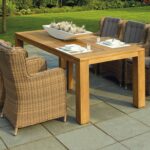Many people want to grow more trees at home but often don’t know how or where to start. In this article, you will learn the best places and methods for establishing a tree garden in your backyard.
How to plant trees in your backyard
The benefits of planting trees in your backyard are numerous. Not only will they add beauty and shade to your yard, but they also provide numerous benefits for the environment. Trees are great at absorbing CO2, reducing air pollution, and providing habitat for wildlife. Here are four tips on how to plant trees in your backyard to get the most out of their benefits:
1.Choose the right tree for your location. If you live in a temperate climate, choose a broadleaf tree. If you live in a subtropical or tropical climate, choose a conifer tree.
2.Get the right soil preparation. Before you plant your tree, make sure the soil is properly prepared with a good organic fertilizer and amended with topsoil or compost. Check with your local nursery about what kind of soil preparation is necessary for your specific tree species.
3.Install a watering system. A good watering system will ensure that your tree gets the water it needs both during dry periods and during rainstorms. Make sure to install appropriate irrigation tubing and check valves so that water doesn’t flood out of the system when it rains.
Benefits of planting trees
Planting trees in your backyard can provide many benefits for both you and the trees themselves. Here are just a few:
-Improved air quality: Trees filter the air around them, helping to improve air quality in your neighborhood.
-Improved aesthetics: Trees add beauty and landscaping to your backyard, making it more enjoyable to spend time there.
-Reduced stormwater runoff: Trees help to reduce stormwater runoff by absorbing water and releasing it slowly over time.
-Enhanced energy production: Trees provide shade and can help reduce energy bills by reducing heat and noise from the sun or wind.
Accurate planting time
Tree planting tips
What to plant
When planting trees in your backyard, you want to make sure that you are planting them at the right time of year. Here are some tips on planting trees correctly:
-Accurate planting time refers to WHEN to plant your tree, not where. You can plant trees in the fall or spring, but you should always check the weather forecast first to make sure there is no chance of rain.
-Tree planting tips for backyard gardeners include preparing the soil well before adding any plants and making sure the root zone of your tree is deep and well-drained. Select a site with good sunlight and ample water supplies.
-To select a tree species that will grow best in your area, consult a local nursery or extension service. Some common types of trees you may want to consider include evergreens, oaks, maples, and sycamores.
Pros and Cons of planting trees in your garden
There are many benefits to planting trees in your garden – not the least of which is the improved air quality that they create. Trees also provide shade and shelter, which can be especially beneficial in hot climates, and they can help to reduce noise levels in your neighbourhood. However, there are also some potential drawbacks to planting trees in your backyard – particularly if you’re not experienced with tree care. Here are a few things to keep in mind before planting your first tree:
-Make sure that the soil conditions are right for tree growth before you plant them. The soil should be well-drained and have a good mix of organic matter and clay.
-Be prepared to invest time and money into tree care. Trees need regular watering, fertilizing and pruning (unless you want them to grow into monstrosities).
-Trees can take up a lot of space, so make sure that you have room for them before you plant them.
Find the best time to plant based on your location
There are three main factors that determine when to plant trees in your backyard: the time of year, your location, and the tree’s hardiness.
The best time to plant trees in your backyard for better growth is in the fall. This is because trees planted in the fall will grow taller and be more productive than those planted in the spring or summer. However, you should avoid planting trees in the winter because they will not grow as tall and will potentially die due to cold temperatures.
Another important factor to consider when planting trees in your backyard is your location. Trees that are planted closer to the ground will grow faster than those planted higher up in the yard. Additionally, trees that are planted close to each other will form a canopy over the area, which will protect it from sunlight and reduce heat exposure.
Finally, tree hardness is also important when planting trees in your backyard. You should choose a hardy tree species if you live in an area with cold winters or summers. For example, elm trees are considered hardy for areas with cold winters, but may not be as hardy in areas with hot summers.
What and when to plant Trees?
So you’ve decided to plant trees in your backyard! There are many things to consider before planting, and we’ll outline a few of the most important steps below.
Where will the tree stand?
Your first consideration should be where the tree will stand in relation to other plants and structures in your yard. Some trees, such as those grown for ornamental purposes, can be larger and require more space than others. If your goal is to create a healthy environment for all plants in your yard, it’s best to err on the side of planting too few trees rather than too many.
How large should the tree be?
The size of the tree also depends on what you plan to use it for. For example, a small tree can provide shade for a small area, while a tall tree can provide shade and fruit production for a larger area. It’s important to consider both the height and width of the area you’d like covered by the tree when making your selection.
When should I plant trees?
Planting trees in your backyard is an excellent way to improve air quality and increase biodiversity in your yard. During spring and fall, when temperatures are cooler but days are longer, trees are more


